Meet iii-resident Mario de Vega on resonance and perception
I am on my way to meet Mario de Vega at iii workspace in The Hague. The artist alternately lives in Mexico City and Berlin, working simultaneously on a range of individual and collaborative projects which involve sound interventions, sculpture and performance. We speak halfway during his residency period in advance of No Patent Pending #38, the performance series presenting radical interdisciplinary practices that engage with sound, image, space and the body.
Frits Dijcks: At what point in your life did you get fascinated by sound?
Mario de Vega: I come from a family background without many cultural interests. I didn’t grew up with exhibitions or anything. But I was always surrounded by friends in the neighborhood who were older than me. I grew up in the North of Mexico City and there was this gang of bad guys hanging around in a park. I met them and they sort of adopted me. They showed me many things. When I was 12 years old, I was introduced into progressive and psychedelic rock music from the sixties and seventies. It was unreadable for me. I couldn’t really understand it.
The bad guys educated you?
In a way, yes. Especially one of them showed me a lot of stuff. I went to many death metal concerts with him. Later when I was sixteen, I started to make collages with tapes. I never had the intention to play an instrument. My uncle died and he left behind a lot of really bad records. Romantic music mainly. But also two tape recorders and a turntable. So that’s when I got these machines and I started to work with them, trying to make loops. That’s where the seeds were planted.
That was something different than the metal music you were listening to. You were then more interested in abstract sound than in music?
At that time I wasn’t even thinking like this. It was more visually. It was more about what sound could look like. I was also intrigued by the logos and imagery of these metal bands. The abstractness of sound came much later.
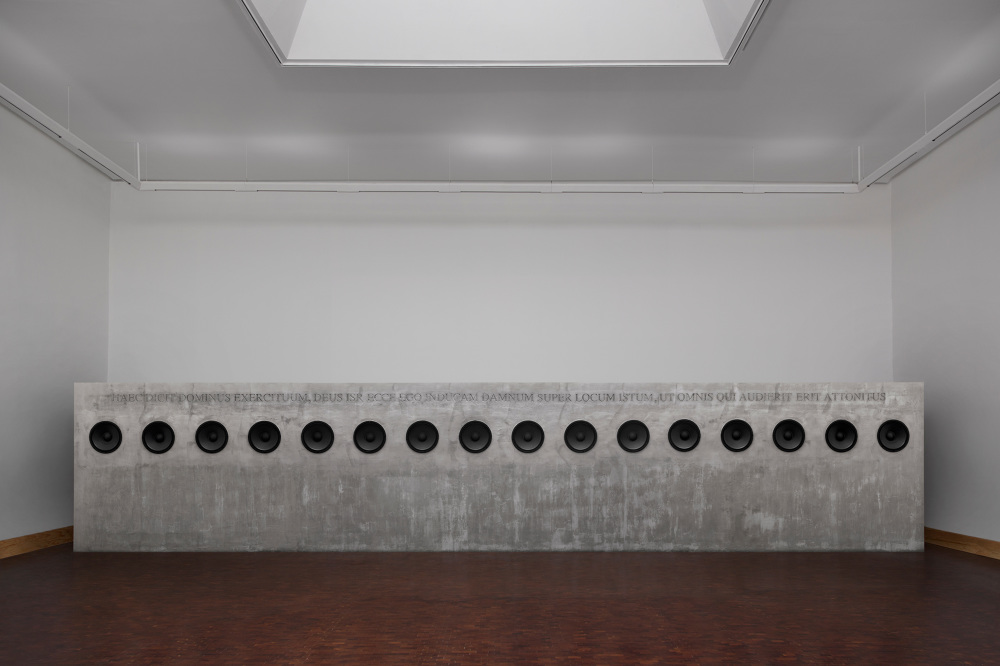
And after a while your interest in music turned into an interest in art?
I need to tell you a story. After having some beers, guys invited me to join them to visit a friend. I was already very late at night. We drove with a car more than an hour to the south, outside of the city. We arrived at a house, knocked on the door. Somebody opened and the first thing I saw was two dead horses at the entrance of the house. And a person with a camera filming. And when he saw me, he said: what is that kid doing here? He cannot be here! So I got very scared. I thought they were doing something quit bad. There was a discussion about me being there and at a certain point they agreed that I could stay. They were listening to very heavy music, far beyond what I was used to at that time. I was very quiet, I had no idea what these people were doing. We were standing in a corridor where you could park five cars and there were these tow dead horses at the entrance and a car with a chain. A studio was in the back. They had to move the horses. They had made a system that worked, so the first one went fine. But then it started raining and the car had no grip, so we had to push the second horse. And there was this mud and blood and the smell of beer. And I was not able to understand what was going on, so I asked: what are you doing? They said: we are making an installation. An installation of what? I never heard this word before. They said they had an exhibition in a museum and they invited me to come to the opening. They gave me the address of the museum. I put it in my pocket and was still very confused. I could not understand what these people were doing. They dropped my at the house of my grandma around nine in the morning. I was completely drunk. My mother opened the door and saw me completely drunk, so she asked me what the hell happened and I said I helped with making an installation. What??? I was trying to explain, but I couldn’t.
But later I came to the opening. I went to the museum by myself. And the guys were surprised that I really came. They hugged me and showed me the exhibition. And it completely shocked me. That was when I realized I wanted to do these kind of things.

Can you tell me how your project ideas start?
For example, I was invited for the experimental sound & film festival LUFF. I was asked to produce a work that would not be a concert. The festival lasts three days. I wanted to produce an image. The idea is based on a photograph of a metal band. But everything is fake. I designed the band, the symbols, the clothing and the graphical elements. I proposed to bring an actor into the festival. The character becomes an intruder in the festival. I used a professional actress. She is at the festival all the time, with make-up and headphones listening to metal continuously. So she is attending the festival, but she is not really there. You cannot really understand what this person is doing at the festival. The action is not announce, so it is not part of the program. But at the end of the festival there is a party with a DJ and you can see her dancing there with friends. After the festival everything will become an exhibition. The clothes, the patches, the playlist she has listened to. All these elements that were used to construct the character. And they will be displayed.
So it is about defining a musical identity?
For me it is more about the normalization of this experimental subculture. All these festivals have the exact same formats. It is very conventional. You come to see a show and you applaud again and again. It is a tradition for many years now. The point is that when you include a format like I use in my project, you dislocate the context. So you can start to react.
You are bringing back experiment to the former experimental festival?
I see it as a social sculpture. It is a volume that is moving. What I am trying to work with is the value of presence. I believe that a work or an object works like this in an economic system, also in art. It has its own presence. Not only in material but also in spending time. That is what I am trying to understand.
Is it also a critique to the system?
No. I am not in that position. I give a comment. It is a statement on how I perceive things. I am aware that I work on the field of sound. That is my material.
What is your role within this construction? You are not visible anywhere within this project?
No, but that is a really good question. I design the character. I film when they perform. I make the different props, like a ring that I produce with a jewelry maker. I make videos of that. I make the paintings and imagery and do the orchestration of the piece. But I am not there. It is very fragile.
And the exhibition will be at another venue in a different context?
Totally. It then will be a work in a solo show in a gallery context.


You work in Europe as well as Mexico. Do you make different works here and there?
Absolutely. There is a different context.
I was working in El Eco Museum, which is in a very dense part of Mexico City along one of the main avenues. I was invited to do a solo show in 2007. My proposal was to blow up the largest window of the museum. The director laughed at me and said no. But we discussed about the possibilities. At the end he agreed that I could make an explosion that had the probability to break the window but with a low chance. It was in the first place an acoustic event. Not a performance. It was part of a series of works with explosions. But it came to a point that I was not interested in explosions as a form of political activism anymore. I reconsidered my work and focused more on the value of absence and presence. To make something that exists but isn’t there. The idea that something already has happened. You only see the result.
To see the resonance of the action?
Exactly. It is exactly this. The propagation of information.
It is quite close to your first art experience with the horses, isn’t it?
Yes, probably. I am very much interested in the idea of disruption. And awareness. To reconsider the relationship that you have with yourself during an experience. That is the transition that I am trying to work with.
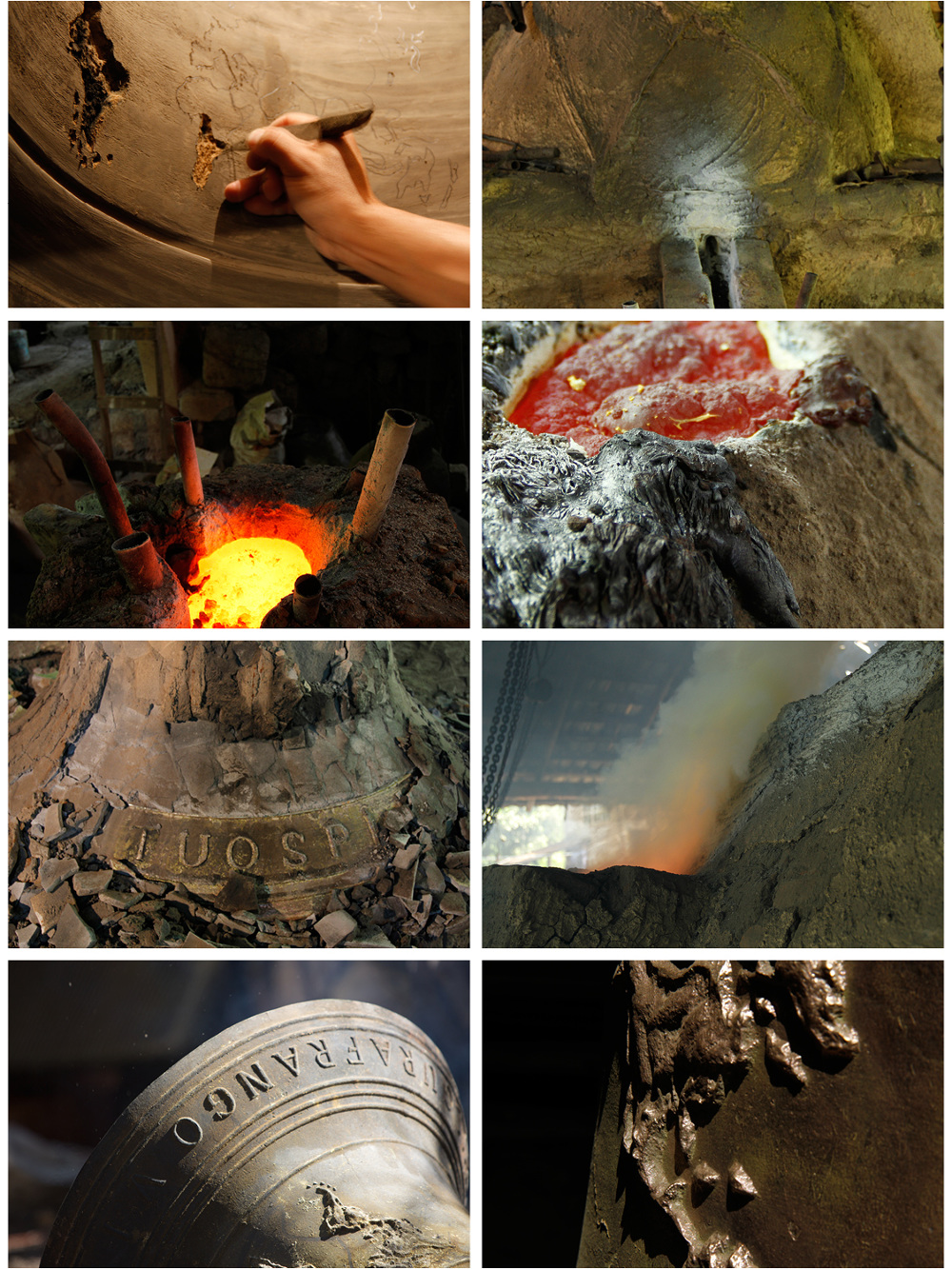

In another project in 2012, I wanted to cast a bell in a traditional way. The idea was that the bell would be buried in the museum. As an intervention that you cannot see. What would happen 500 years from now when this is not a museum anymore an somebody would find it? But as you know Mexico was a colony and churches where build over places of old pyramids. I was trying to come close to that. But the museum didn’t allow me to bury the bell. But I could show the bronze bell, without the clapper, and I would bring it back to where it was produced. And they would destroy it. They had to make a fire inside the bell to make the metal softer and they had to hit it for hours and hours to break it into pieces. I made a drawing on the map of Mexico City with 32 GPS spots to bury the pieces. So I was able to make a permanent installation out of it, although people might find the pieces and maybe sell it. But the idea is there. Everything is documented and now I have to find a way to put it all together. The last pieces were spread this year.
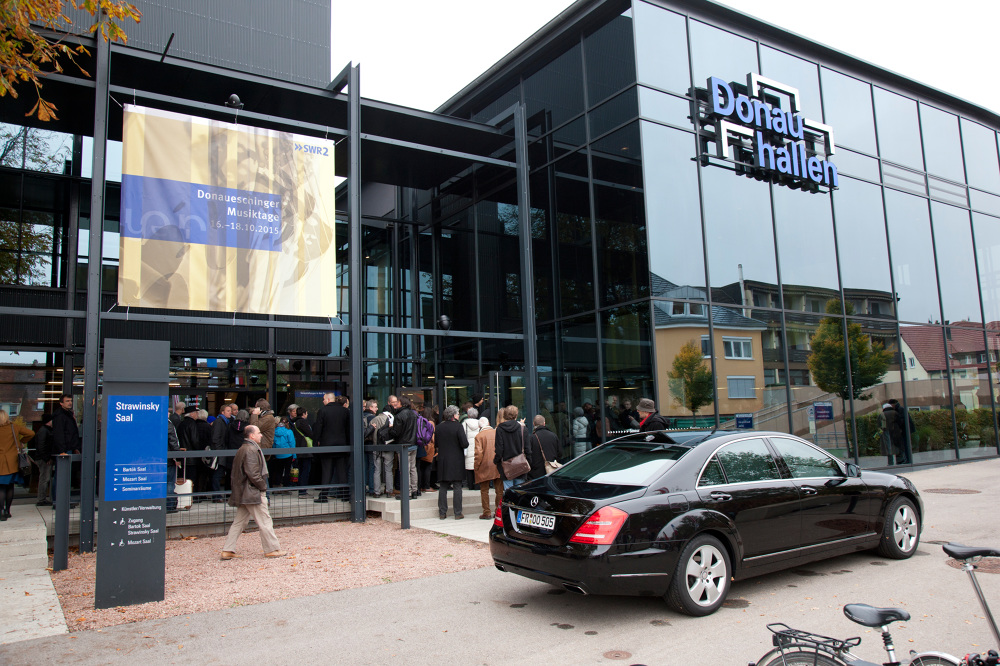
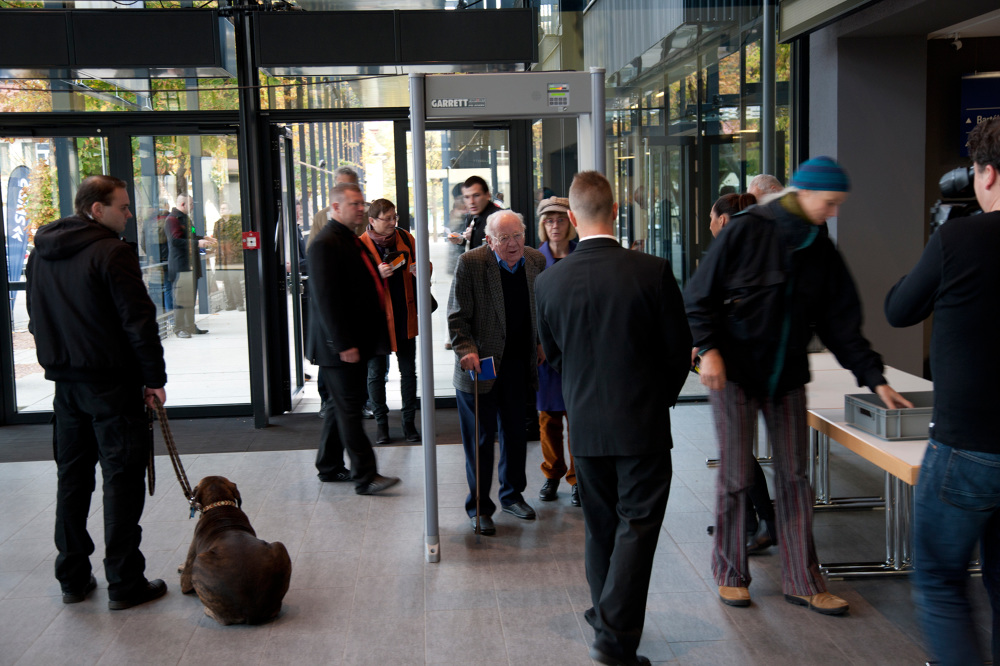
And what does the context of Europe do to your work?
I was invited to make a work on a German new music festival. That was a big challenge for me. l proposed to record a CD with a string quartet. The CD was to be spread during the festival and it would contain malware. The malware would give me control of the operating system in some cars with CD players, so that I could control the lights and the windows of the car. This time the festival director gave permission to do the project. But suddenly there was a letter from a lawyer addressed to the director. We then had two options left. To cancel my participation or to make a new proposal.
I made a new proposal to create an extra layer of security control in the entrance of the concert hall. Guests would randomly be asked for their ID. So that people would get annoyed entering the festival. I was not interfering the concert program, but the perception of the visitors. It was a different approach but it had a similar purpose as the original idea.
How did it work out?
Well, there was a lot of angriness, of course. People wrote letters of complaint. We had a lot of discussions during the process. About the different roles of the artist, the people who would execute the projetc and the role of the director. But also about the idea of spending a lot of money on an orchestra to play at such a festival. It would be impossible to do a project like this in Mexico.

Are you in the middle of a specific project or in the middle of various experiments right now?
It depends on how we define ‘experiment’. For me it is not ‘trial and error’. It is more to have an idea, research about this idea, to find possible methodologies to materialize this idea and in certain cases to ask for support. I believe that communities are important. I think that de days of solo artists who work on their own are over. Two heads think better than one. You of course have your own needs, but you can share them with others to create something that is more robust and more complex. I really believe in this. By working with others in studios like these you can get more feedback. With other people I work on developing tools, mainly to produce sound. I understand sound as a material with very complex properties.
What tool are you working on now?
The instrument I work on at iii combines electronic functions with graphical elements. The instrument reflects the light. The visual element is important to me. And the material as well. It is not just an instrument. I think the presence of the object is also important. It is like a sculpture for me. The objects has its own presence. And I manipulate its presence during a performance. You can also see the traces and marks of the use of the tool. It is like a canvas. I am now working on a new canvas.
Is the instrument also for others to use?
In this case no. This is my tool. The interface has been used before, but it comes together with a tool that is open. It has two lasers to measure the X and Y. The values create the resonance frequency of the room it is used in. So the system will tune itself to oscillate into the range of the space. So you work physically with the room.
How will the difference between a small or large room occur?
They will resonate in a different frequency.
Will a large room create more dynamics to the sound that it will produce?
For example, yes. It will use more standing waves. But it is unstable. Not random, but unstable. I cannot 100% control it. This is what you see during a performance. So you start to doubt about what you see and hear. To work with the latency of perception. That is what I try to do.
So you are an illusionist?
I like this idea a lot. I think we have a lot to learn.
You also collaborate with others to make instruments. Are they technicians or artists?
Artists mainly. The technical part comes in when you want to solve a problem. We don’t have a background in coding. We are not developers in terms of coding.
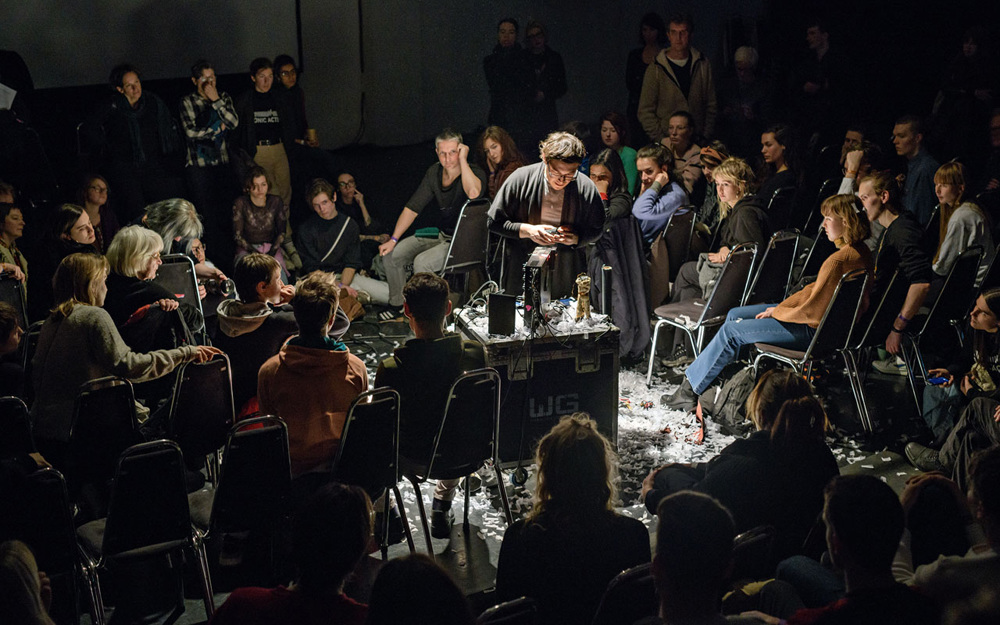
Your performances are an intimate dialogue between you and the audience?
Yes, I try to refuse the idea of a stage. I am in the middle of a room with other people and we are listening together and we can see 1:1 what is happening.
You perform at different venues like festivals or art spaces. Is there a difference in the way audiences respond?
Yes, at a festival the people are looking for something. It’s like a buffet. There is a lot of food. You can go from one to the other. At a regular concert venue, the people have a more specialized form of interest. They know more. And at an art gallery there is a more visual aspect of this.
And what does that do to you when you perform?
That is an interesting question. But my conclusion is that it does not matter to me. But the result is always context related. When you are in a white space, you use that. When you have four speakers, it would be stupid not to use them. I always try to adapt to the situation.
What would be the ideal presentation space for your work?
I don’t know. But I like it when it is a mix of an installation and performance. You can then explore different areas. It is somewhere in between. I think confusion triggers awareness. I can for example image a band that starts playing one hour before the audience arrives. The audience will start with the feeling that they have arrived too late. Then you open up a dialogue within the moment. That doesn’t happen when you are part of a line up at a festival with one act after another.

Do you have any idea of what your work will be like in 5 or 10 years from now?
Wow, well. What I want is to be able to work. That is all I want. I will work with sound, that is my compromise. But I will always redefine it. It can be an object, a performance.
You also make publications. What is the purpose of that medium for you?
I need to leave trademarks. It is a way to extend my presence in the world. And I also enjoy it a lot. To work with an editor and a graphic designer and with print. I just made publication on remote areas and the human presence. It is remote, but it is not empty. You know that you will find something there. I travelled to many remote places in Japan and Chile to photograph and to record. The publication it is also connected to video and an audio CD.
You have travelled to a lot of places the past 10 year. Do you have to leave this planet at a certain point?
No, no. During a visit to India I experienced a new perception of the world. It destroyed all my conventions of live. I met a person who said: death is an illusion. We are not experiencing enough to know what was and what will be. It was something I needed to think about. But I think he’s right. It is a long process that will not end. As long as you are doing things.
How important are initiatives like iii for you?
I think we need communities like these to progress. I think the time for solo artists is over. We need communities. We don’t always have to agree, we also need the conflict. We promote new practices. It is a way to attack the existing systems. And to use the system. I think that is really important.

Mario de Vega will perform at No Patent Pending #38 on October 12, 2019 at iii workspace, Willem Dreespark 312 in The Hague
Doors open 20:00 / Event starts 20:30 / Tickets: €5-€10 sliding scale
Performances by Mario de Vega, Marianthi Papalexandri-Alexandri, Budhaditya Chattopadhyay and Mischa Daams.